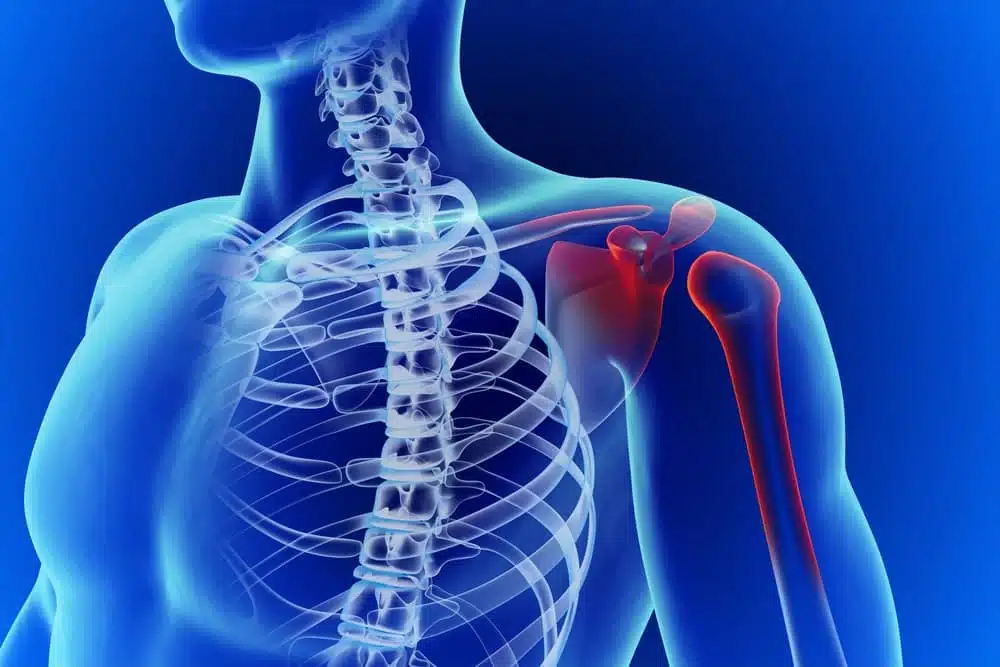Article At A Glance
- Shoulder arthroscopy is a minimally invasive surgery to alleviate shoulder pain.
- The procedure involves inserting a camera into the shoulder joint through a small incision
- Little to no risk involved; the recovery time is typically quicker than other shoulder surgeries.
When shoulder pain keeps you from doing the activities you love, it also makes it more difficult to perform daily tasks like bathing or even dressing yourself. Does the idea of undergoing shoulder surgery seem intimidating? Don’t worry; there’s a minimally invasive shoulder procedure known as shoulder arthroscopy that might be able to relieve your pain so that you can easily get back to your normal routine.
What does this shoulder procedure treat, and how does it work? This quick guide explains shoulder injuries that call for surgical intervention, how your doctor might perform it, and what you can expect during recovery.
Table of Contents
- Conditions and Injuries a Shoulder Arthroscopy Treats
- Preparing for Shoulder Surgery
- How Doctors Perform Shoulder Joint Arthroscopy
- Recovering From Scope-Assisted Shoulder Treatment
- How Shoulder Arthroscopy Compares To Other Treatments
- Key Takeaways
Conditions And Injuries A Shoulder Arthroscopy Treats
Several medical conditions can cause severe shoulder pain, but not all these issues require surgical treatment. If you experience throbbing or intense shoulder pain, consult with your doctor. Typically, they will perform an examination and also use your medical history to reach a final diagnosis.
Common reasons patients experience shoulder pain include traumatic or repetitive motion injuries or age-related conditions like arthritis or thinning cartilage. Depending on your diagnosis, a doctor may recommend arthroscopic or keyhole shoulder surgery.
This procedure involves making an incision the size of a keyhole to place a camera (an arthroscope). The camera then projects images of your shoulder joint onto a screen, allowing your surgeon a better look at the surrounding tissues. Then, they will repair damage to the shoulder joint to relieve your pain, including the discomfort the following conditions cause:
- Rotator cuff tears
- Tendonitis
- Shoulder impingement due to bone spurs
- Shoulder instability due to joint dislocation
- Labrum tears
Whether you need relief from an arthroscopic rotator cuff repair, torn labrum repair, or another surgical solution, this procedure stands. It isn’t as invasive as other shoulder surgeries, so it usually offers quicker recovery.
Preparing For Shoulder Surgery
Are you scheduled for shoulder arthroscopy? Your doctor should provide a full set of instructions, which you should follow to a tee leading up to surgery to ensure that all goes smoothly.
Typically, shoulder surgery patients have the following rules to bear in mind:
Two Weeks Before Surgery
Your doctor will advise adjusting your pain medications to avoid complications during your procedure. For example, they’ll likely have you stop taking over-the-counter pain medications like aspirin and ibuprofen (these medications thin your blood and can cause issues during surgery).
Do you have other medical conditions like heart disease or diabetes? Your doctor will have you see a specialist for treatment that won’t interfere with your shoulder arthroscopy.
In addition, you should reduce your tobacco or alcohol intake. These substances can slow your body’s healing after surgery.
24 Hours Before Surgery
Arthroscopic shoulder surgery requires the use of either local or general anesthesia. Stop eating or drinking anything once the clock strikes midnight on your surgery date—approved medications you can take with a small sip of water.
Arrive at the hospital on time so the medical staff can prepare you for surgery. It’s also smart to pack a button-up shirt to wear home from the hospital because resting your shoulder following the surgery makes any pullover shirt difficult.
How Doctors Perform Shoulder Joint Arthroscopy
Once you are under anesthesia, your shoulder surgeon will make a small, half-inch incision and insert the arthroscope. They may inject safe fluids into the incision site to make moving the camera around the tissue and project images easier.
Doctors use the scope to evaluate the damage to the shoulder joint. From there, they make one to three more incisions so that they can begin repairing the injury. Most surgeons perform the following techniques to address various shoulder injuries:
- Rotator cuff repair: Strengthening tendons that tear and shave down bone growths.
- Shoulder dislocation or instability: Repairing the rim of the shoulder joint and the soft tissues surrounding it, such as the cartilage, tendons, and ligaments.
- Shoulder impingement: Cleaning out damaged or inflamed tissue and shaving down the bone spur to prevent inflammation.
These procedures usually take about an hour. Once a surgeon completes the repairs, they will close each incision using sutures or staples. You will then come off the anesthesia and enter the recovery area.
Recovering From Scope-Assisted Shoulder Treatment
Shoulder arthroscopy tends to be an outpatient procedure, meaning most patients go home the same day. Your doctor may decide to keep you close for monitoring. However, most of your recovery period will occur at home and last between one and six months.
Your doctor will provide post-operative instructions to aid the process and keep you comfortable. Typically, this recovery includes wearing a sling for the first week after the procedure. You’ll also use a combination of medication, ice, and a local anesthesia infusion device to control your pain.
At some point, you’ll also need to follow up with your doctor to monitor your progress (and remove the sutures or staples).
How Shoulder Arthroscopy Compares To Other Treatments
You can try to treat your shoulder pain with physical therapy or by adjusting your activity level. An open surgery that exposes the shoulder joint will also relieve pain, but the recovery period is longer, and it may result in more complications. While shoulder arthroscopy comes with risks of severe complications, they are rare.
Key Takeaways
- Arthroscopic shoulder surgery uses a camera to take images of the shoulder joint before doctors repair damaged tissue.
- The procedure treats conditions such as a torn rotator cuff, shoulder instability, and bone spurs.
- Shoulder arthroscopy is minimally invasive, with a recovery time between one and six months.
- This procedure has a quicker recovery period and fewer risks than an open procedure.
References
- https://www.mountsinai.org/health-library/surgery/shoulder-arthroscopy
- https://intermountainhealthcare.org/ckr-ext/Dcmnt?ncid=521086405
- https://my.clevelandclinic.org/health/treatments/21785-shoulder-arthroscopy

